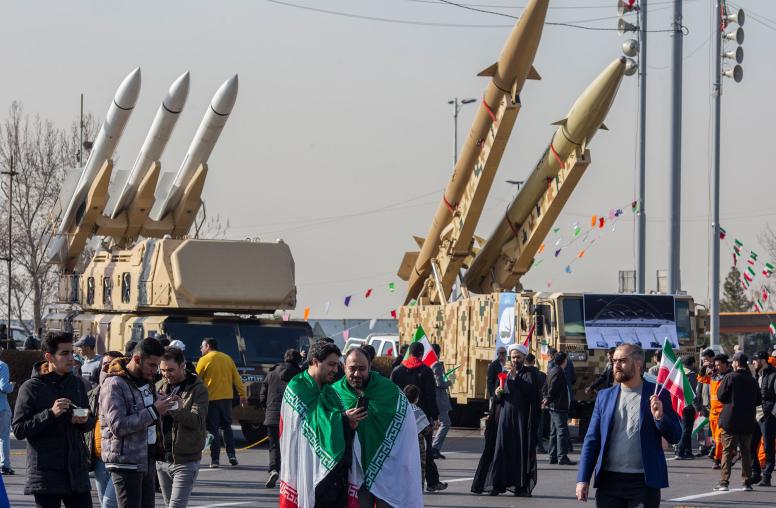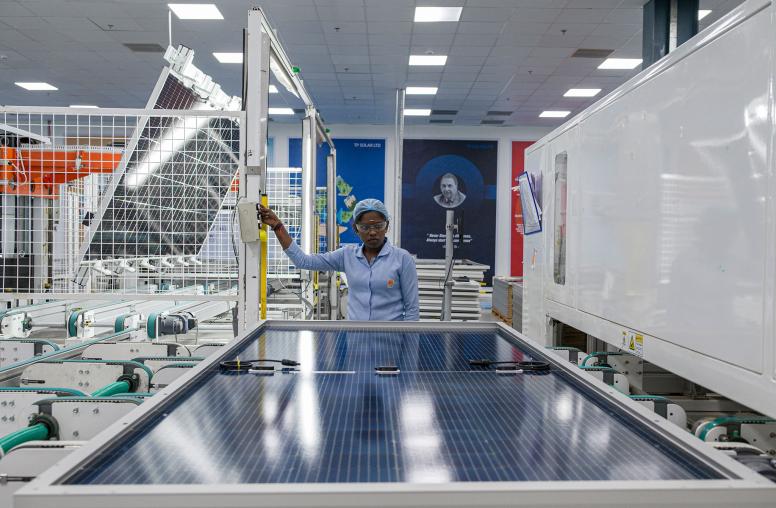China Trade War: Risks and Strategies
Leaders of a bipartisan House panel on China lament tariffs, promote talks and see almost no chance for a deal.
The chances that trade talks scheduled to resume with China next month will result in any broad agreement with the U.S. are slim to none, said two members of a bipartisan congressional panel focused on U.S.-China relations. “It’s important that we keep talking,” said Rep. Rick Larsen (D-WA), the co-chair of the House of Representatives U.S.-China Working Group. “That’s a positive, but I haven’t seen anything that has changed to ensure that something would be different” when U.S. and Chinese trade officials are scheduled to sit down again in early October.

Larsen, appearing at the U.S. Institute of Peace on Sept. 11 with his co-chair, Rep. Darin LaHood (R-IL), said the most that can be expected is a narrow ceasefire on tariffs in the trade war, as duties are a weapon damaging to both countries’ economies. The U.S. wants a so-called snapback enforcement mechanism to address a range of issues—but only for China. Meanwhile, Larsen said, China seeks a mechanism that applies to both countries. Without a breakthrough on that point, an agreement will be difficult to attain.
LaHood, whose district was selling 25 percent of its soybean crop to China before the outbreak of trade hostilities and is the U.S. manufacturing center for heavy-equipment maker Caterpillar, said only an economic or stock market shock would make a deal more likely.
“This administration, one thing they follow and listen to is the stock market,” LaHood said. “If trade directly affects the economy, I think giving up on the snapback” is a possibility and it might “force the administration to try to cut a deal.” The snapback would allow the U.S. to unilaterally reimpose tariffs if, in Washington’s view, China had violated an agreement.
Understanding China
Larsen and LaHood head the House of Representatives U.S.-China Working Group, a bipartisan panel established in 2005 to foster discussions between Congress and China and deepen understanding of the Asian power among lawmakers and their staff. According to the panel, it has sent at least 10 missions to China, focusing on issues including trade, intellectual property, military affairs, and the environment. Larsen and LaHood went to China in March to discuss deteriorating trade relations with Chinese officials. Like LaHood’s district, Larsen’s, the center of Boeing manufacturing, benefits significantly from commerce with China, the lawmaker said.
LaHood and Larsen, who appeared in USIP’s ongoing series of Congressional Bipartisan Dialogues, agreed on the basic inequities that have soured U.S.-China trade, including: restricted market access for U.S. competitors, enforced technology transfers, joint-venture requirements, and appropriation of intellectual property. By 2016, the will to address these impediments to free and fair trade had grown in Congress and among Democratic circles, Larsen said. According to Larsen, a Hillary Clinton administration would also have taken a tougher approach on China; the difference would have been one of strategy and nuance.
“I want to be supportive,” Larsen said. “We all want to be supportive. It’s just at some point there is a discussion about whether this particular approach is working.”
Damaging Tariffs
While Larsen has assembled ideas for trying to restructure the broader U.S.-China trade relationship into a white paper, he believes the immediate, critical need is to find a way out of the damage that tariffs are doing to businesses and consumers.
LaHood referred to tariffs as taxes on businesses and consumers that hurt his farmer constituents, but he pointed to the administration’s argument that they stem from 25 years of failed efforts to alter Chinese behavior and get systemic reform. A better approach would have been to partner with allies that also have issues with China, including Japan, South Korea, and Europe, LaHood said. “But clearly that's not what this administration has done,” he said. While the administration’s strategy is risky, LaHood thinks it may ultimately produce the concessions the United States is looking for.
“I think we're in kind of unknown territory right now on how this trade war, this economic war, ends,” he said. “Obviously there's a lot of argument that the Chinese are going to wait us out until after the election.”
Hawks’ Alliance
A change in party in the White House could mean new tactics or strategy, but it won’t alter the fundamental reality that Congress’ stance with respect to China has stiffened, Larsen said.
Congressional hardliners on China can be sorted into three groups, according to Larsen: economic and trade hawks; national security hawks, who see China as a security competitor; and human rights hawks, who look at China's “terrible human rights record,” especially the repression of Muslim Uyghurs and other minorities in the Xinjiang region.
“Those hawks flew separately for the longest time,” Larsen said, and so long as they did, there was not a broad-base consensus for confrontation.
Now, the three are flying together. That has helped foster bipartisan support for a more competitive and challenging approach, he said.
“In 2005, I might have been the majority in Congress in terms of engagement,” Larsen said. “The ground has shifted.”




